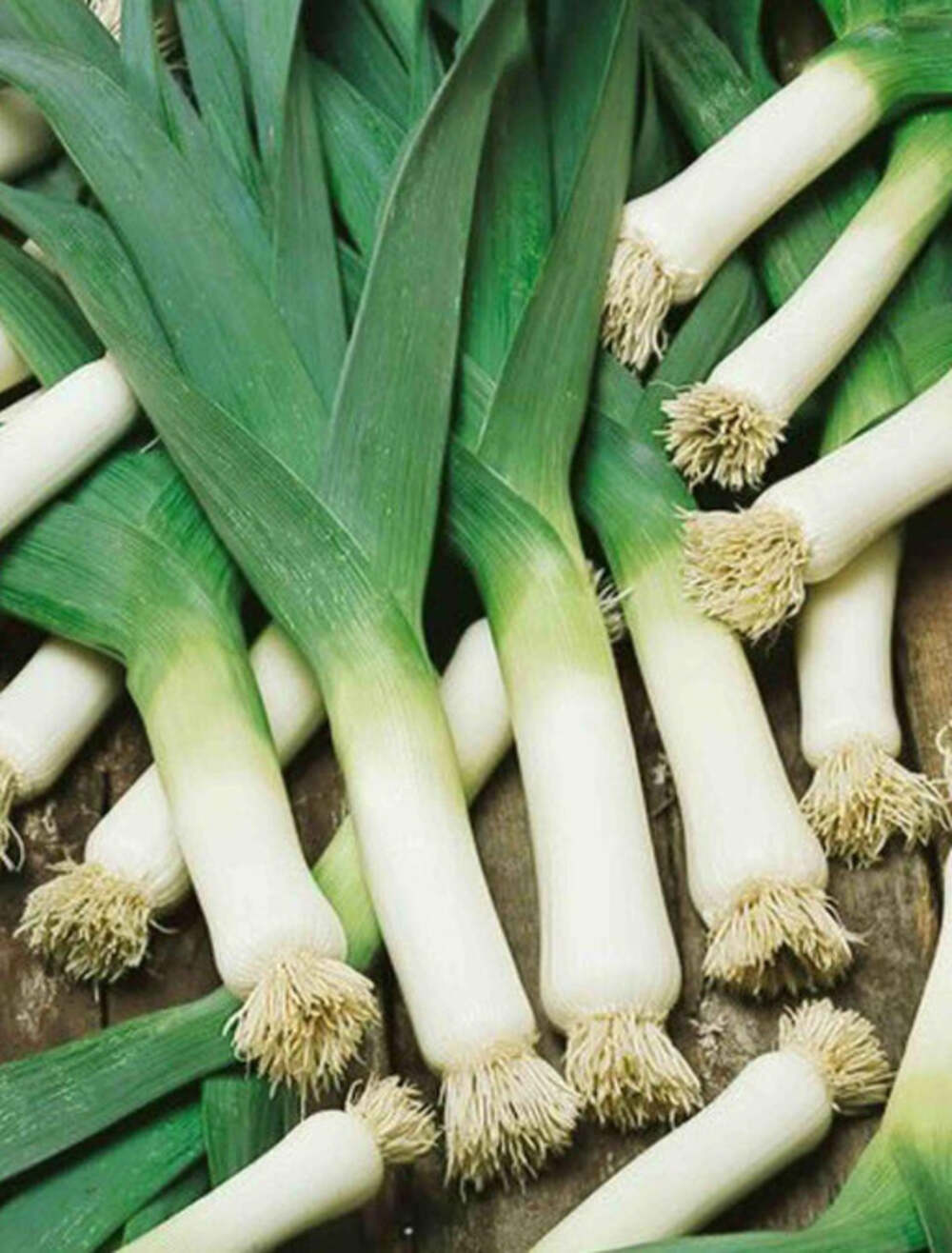The American Flag leek, also known as the “Giant Musselburgh” or simply “Flag” leek, is a popular heirloom variety known for its mild flavor, hardy nature, and versatility in the kitchen.
Here’s an overview of the American Flag leek: Key Characteristics Appearance: American Flag leeks have a long, thick white stalk that transitions to light green leaves. The stalks can grow up to 12-15 inches in length and about 2-3 inches in diameter. Texture: The white stalks are tender and slightly crisp, while the green leaves are tougher and typically not eaten. Flavor: They have a mild, sweet, onion-like flavor, less pungent than regular onions. Nutritional Value Leeks are packed with nutrients and offer numerous health benefits: Vitamins: High in vitamins A, C, and K. They also contain B vitamins, particularly folate. Minerals: Rich in essential minerals such as iron, manganese, and magnesium.
Fiber: Good source of dietary fiber, which supports digestive health. Antioxidants: Contain antioxidants, including flavonoids, which help protect cells from damage.
Growing Conditions Climate: Prefers cooler weather and can be grown in spring, fall, and mild winter regions. Ideal temperatures for growth are between 55-75°F (13-24°C). Soil: Thrives in well-drained, fertile soil rich in organic matter. The soil should have a pH between 6.0 and 7.0.
Sunlight: Requires full sun to partial shade, with at least 6 hours of direct sunlight per day. Watering: Needs consistent moisture, especially during the growing period. Ensure the soil is kept moist but not waterlogged. Planting and Care Sowing: Seeds can be started indoors 8-10 weeks before the last frost date or sown directly in the garden after the danger of frost has passed. Transplant seedlings when they are about 6-8 inches tall. Spacing: Space plants 6-8 inches apart in rows about 12-18 inches apart. Ensure there is enough room for the leeks to develop thick stalks.
Trenching and Hilling: To blanch the stalks and produce tender white stems, plant leeks in trenches about 6 inches deep and gradually fill in the trench as the plants grow. Alternatively, hill soil around the base of the plants periodically. Weeding: Keep the planting area weed-free to reduce competition for nutrients and water. Mulching can help retain soil moisture and suppress weeds.
Fertilization: Use a balanced fertilizer or compost to enrich the soil before planting. Additional feeding with a nitrogen-rich fertilizer during the growing season can promote healthy growth.
Harvesting Timing: American Flag leeks are typically ready for harvest 100-120 days after planting. They can be harvested earlier for smaller, more tender stalks. Method: Harvest by gently digging around the base of the leek and lifting it out of the soil. Remove any excess soil and trim the roots and dark green leaves.
Storage: Fresh leeks can be stored in the refrigerator for up to 2 weeks. They can also be blanched and frozen for longer storage. Uses Culinary: Leeks are versatile and can be used in a variety of dishes. They are excellent in soups, stews, and casseroles, and can be sautéed, grilled, or roasted. They pair well with potatoes, meats, and other vegetables. Nutritional Benefits: Regular consumption of leeks supports overall health, providing essential vitamins and minerals, and aiding in digestion. Summary American Flag leeks are a versatile and nutritious variety known for their mild, sweet flavor and hardy nature. They thrive in cooler weather and require well-drained, fertile soil and regular watering for optimal growth. With proper care, this leek variety can produce long, thick stalks perfect for a range of culinary uses. Whether enjoyed in soups, stews, or as a side dish, American Flag leeks add a delicious and healthy element to any meal.
| Weight | 15 g |
|---|






